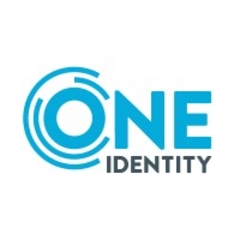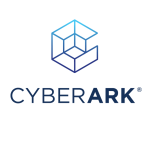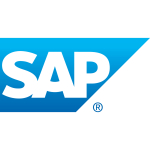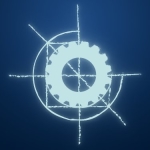What is our primary use case?
The use case is like any other identity management solution: to provision and de-provision software accounts and entitlements for new hires and terminations, and to update name changes, leaves of absence, and those kinds of business cases. The goal of the tool is to automate processes of updating or modifying user access.
How has it helped my organization?
One Identity Manager is going to improve your CIS standards, or any other security framework, because it going to help automate account management and entitlement management. It's going to help organizations run a certification campaign and implement role-based access processes.
It also helps consolidate procurement and licensing. You can configure the tool to track cost-center expenses or licenses of software assigned to users' workstations. Typically, One Identity Manager is not used for that purpose, but it has those capabilities.
Another benefit is that it helps streamline application access decisions, application compliance, and application auditing. You can implement a request process for onboarding of any application, meaning a user can request access to an application and it will follow a workflow approval process and the request can be approved or denied. Once access is granted, One Identity Manager will provide access automatically to the target system. You can also define certification campaigns to recertify access for users. On top of that, you can configure segregation-of-duty rules.
In addition, if the application owner has all the information or the criteria to make a decision—i.e. all these users need access to my application, and all these users don't need access—we can integrate that application within One Identity Manager and enable a request engine process for that application. For example, if a new employee needs access to that application, they need to submit a request for access and the approval process will be directed to the application owner. The application owner can approve or deny access for that person. In that way, the entire decision process belongs to the application owner and not the IT department.
One Identity Manager can also help achieve an identity-centric Zero Trust model. You can configure the tool to identify the different departments, call centers, and locations to give them the minimal permissions necessary to perform a task. Furthermore, if you have critical access or entitlements that need to be recertified, you can run a certification campaign against an Active Directory group or Google group or SIP entitlement to recertify that these entitlements in Active Directory, for example, are assigned to these 20 users. You can then ask someone to certify this critical group and determine if all 20 users are still needed. If the decision-maker denies access to some of those users, the tool can remove the access automatically. It definitely gives you that flexibility.
What is most valuable?
It helps in managing SAP. There is a connector that you configure with the tool and it helps to provision accounts and assign roles or permissions in SAP. If there is a disconnected SAP application and you want to bring it on board, One Identity Manager gives you the tools to do so.
One Identity Manager connects SAP accounts to employee identities under governance. Although each organization is different, what is typical in some organizations is that it is important for them to meet security compliance regulations like CIS controls. They use the solution to meet those requirements.
In addition, healthcare companies have to be HIPAA compliant. One of the HIPAA rules is related to terminations. They need to make sure that every user or employee who is terminated is denied access within 24 hours. One Identity Manager helps you to implement that kind of case. If we connect One Identity Manager with the human resources system, we can read the employee's end date and automatically disable access for that user in less than 24 hours. In fact, we can disable the employee, once we have connected to Active Directory, in five minutes or less.
One Identity Manager doesn't have a privileged access management model but we can create one. A robust solution is based on the Windows platform. To address this use case you need a SQL Database and Microsoft Internet Information Services. If your organization is a Windows environment, One Identity Manager is a good option for your company.
In terms of the user interface, Quest, the vendor, follows up-to-date web standards for development. Currently, they are moving to implement Angular as a framework to implement end-user UIs. As a result, end-users will see a pretty nice website, a web portal where users can approve requests, submit password changes, or submit new requests. Also, if there is a certification campaign running, the web portal is very user-friendly. The manager can log in and see items that need approval or denial. The current version is designed to support mobile, tablets, and web browsers.
We also make use of One Identity's business roles to map company structures for dynamic application provisioning. That is a very important feature because most companies want to implement role-based access. Business roles are one way to help companies to identify job codes and position codes. It enables the grouping and automating of certain types of access for certain departments. For example, if you know all the people in your sales department, you can configure a business role so that anybody who is a new hire in that department will get certain accounts or certain access or certain groups in different applications. Doing that in One Identity Manager is a very simple task and it is very well organized.
The product can also be extended to support any of the SaaS or PaaS applications on the cloud. Nowadays, identity manager solutions are focused more on managing of identities and entitlement access on-premises. But companies are moving to the cloud and it has become very critical for solutions to start handling user accounts and permissions in the cloud. One Identity Manager is specifically a product that is moving in that direction and providing connectors to the cloud. It's a gap that needs to be closed and not many providers are investing in that. I've been implementing One Identity Manager for 12 years and I still haven't seen any other company doing cloud identity management, 100 percent. Hopefully, next year and in the following years, more companies are going to start adopting that technology.
And whenever you implement test, dev, and production servers, it will help minimize gaps in governance coverage among them. Using the solution you can connect and configure users in production, but if you configure dev or test instances, you should absolutely be able to handle ID and governance access for those applications.
What needs improvement?
End-user UI customization is difficult and requires some knowledge of proprietary Angular technology. Every time a customer asks us: "Hey, can we modify this form in the UI?" or "Can we integrate a new form?" it's difficult to do. It's possible and we usually do it, but coding form changes typically takes two to four weeks, depending on the changes.
There is also a lack of connectors. One Identity has between 10 and 20 connectors compared to SailPoint IdentityIQ, which has about 100 connectors. Quest is improving on that. They do have cloud connectors and you can expand the number of connectors. They know there is a gap. But the connectors One Identity has are the most common connectors among all organizations.
For how long have I used the solution?
I have been implementing the solution for about 12 years.
I don't use the solution as an end-user, I just implement it as a consultant for multiple companies. When a company wants One Identity Manager, I gather requirements, do the design, implement the solution, and train people on how to use it.
What do I think about the stability of the solution?
The product is very stable and performs well for medium-sized organizations with fewer than 200,000 users. For organizations with over half a million identities, there are some performance issues that have been found in previous versions, issues that affect the end-user experience. For example, if you run an attestation cycle or a request for a deployment with half a million identities, the system becomes a little slow in processing end-user requests to refresh a page, because of the amount of data.
Once you go into production and you have a stable system, you have it for a year or two, as long as there is no major issue that you find in your deployment, something that can be fixed in the next release. Typically, customers have the same version for one or two years before they decide to do an upgrade. Going through an upgrade to the next version means a lot of production testing of your current implementation.
What do I think about the scalability of the solution?
The scalability is very good. You can scale the application job servers or web servers. They are very easy to scale. Once you have identified your gap or your need for scaling in your current deployment, it's just a matter of adding a new server, configuring it, and you're done. It's highly scalable.
How are customer service and support?
The only advantage of their Premier Support is that you have an agent from the vendor assigned to your account, someone you can contact for any kind of product updates or fixes. That person will also tell you, "Hey, the next release is coming and these are the new features, these are the hotfixes." You get the added value that if you open a support ticket with them, your Premier Support agent will try to get a response a little sooner than usual.
How would you rate customer service and support?
How was the initial setup?
The deployment is in between easy and difficult. On a scale of one to 10, where 10 is "easy," it's an eight. It's not difficult to implement and use the out-of-the-box functionality. I can have a company running in two weeks, including connecting the tool with Active Directory and creating and updating users.
When a company wants more customization, that is when it starts getting more complicated. But if a company is looking for basic use cases and not too much customization, from the start of gathering requirements, though deployment in production and Active Directory, could take three to four weeks. That is fairly simple.
You have the option of deploying the solution on-premises or in the cloud or using Quest's cloud. The solution requires application or database servers in a web server. You can deploy it on-premises or, if you have Amazon or Azure components, you can deploy the solution there. And Quest, as a company, offers cloud services, where you pay for a One Identity Manager instance with the number of users you need, and they will do the installation and configuration for you, and they will take care of all the technology. You then just need to implement your use cases. So there are three options: On-premises, where the customer handles all the servers, in the cloud, where the customer handles all the servers, or through Identity Manager on Demand, where Quest manages all the infrastructure and servers and the customer just implements the business cases.
The number of people involved in an implementation depends. I have led teams of two people and teams of 20 people. I have implemented the solution for companies with 10,000 users and I have done an implementation for a major company with about half a million identities. For that instance, we had 10 dev servers and 20 people involved, including developers, testers, project managers, et cetera.
At the very least, when the vendor releases hotfixes every three or six months, you will need to do maintenance if there is an issue with your implementation that has been addressed in that release. Typically, customers do upgrades once a year to the next version. But the solution doesn't require a lot of attention.
What other advice do I have?
My advice is to review your business cases and try to use most of the out-of-the-box features of the product, instead of asking a consulting company to customize the solution. Adding customizations will add some burden when you need to upgrade to the next version or make changes. They will increase the chances of failure and your progression and smoke testing. Try to reduce the amount of customization with this tool.
When it comes to customizing One Identity Manager for particular needs, it's like any other tool. When the tool is implemented we try to push customers to use all of the functionality. If there is a need to customize, on a scale of one to ten, where ten is easy, customizing it is a seven.
And as a tool, on its own, it does not create a privileged governance stance to close the security gap between privileged users and standard users. It needs to be integrated with another product. One Identity Manager does the user provisioning, de-provisioning, and access requests and management. But if you want a full integration with a PAM solution, Quest has a different solution called One Identity Safeguard. Safeguard is the solution for privileged access management and can be connected with One Identity Manager. By connecting the two tools, you can keep track of the submission of requests with One Identity Manager and the fulfillment of the requests in the privileged access management tool, which is Safeguard.
Disclosure: My company has a business relationship with this vendor other than being a customer. Partner

















